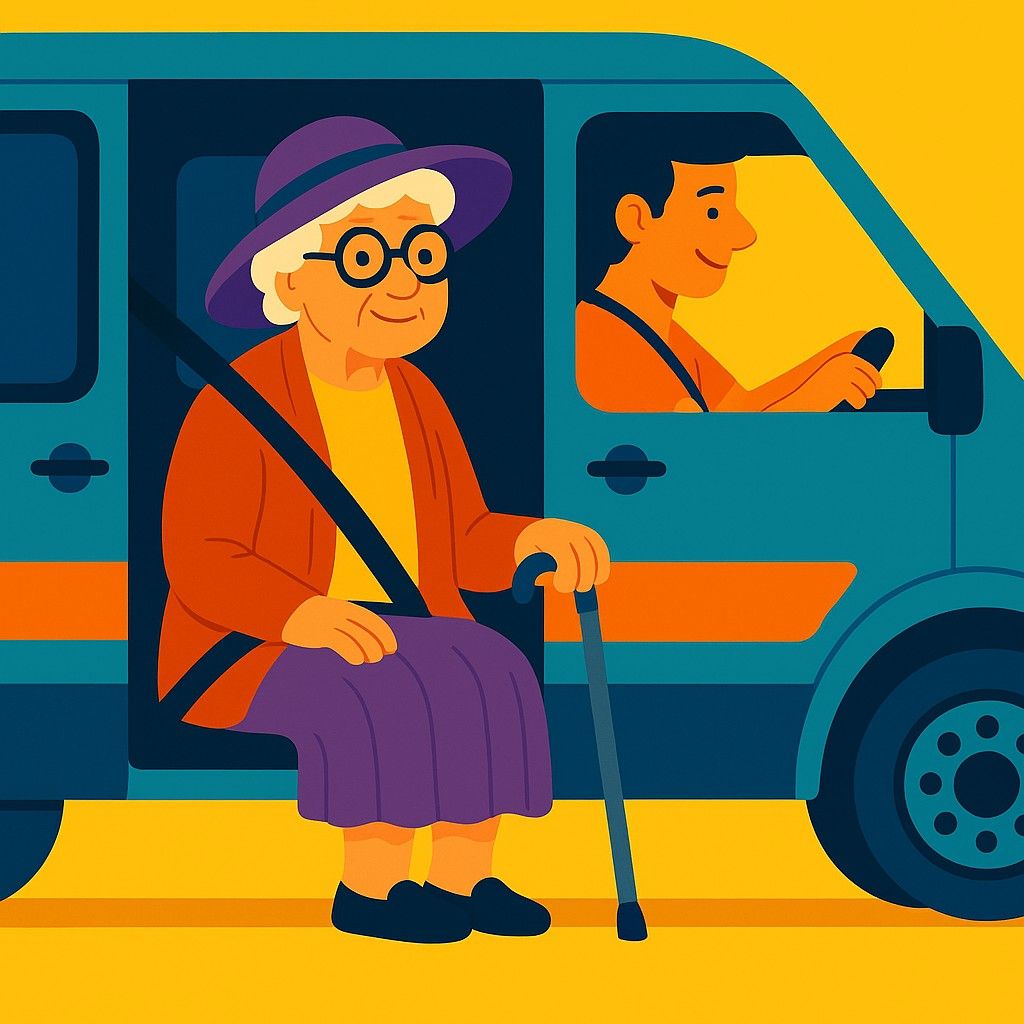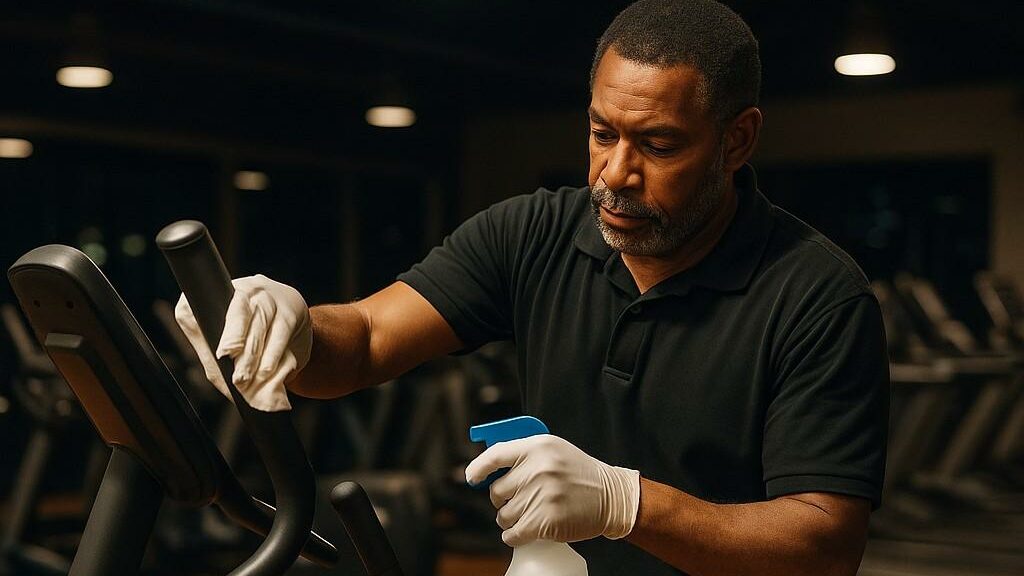Exploring Senior-Friendly Transportation Alternatives
There comes a time for many older adults when driving is no longer the safest or most practical option. But giving up the keys doesn’t have to mean giving up freedom. Today, a quiet revolution in senior-friendly transportation is unfolding—one that’s helping people maintain independence, stay connected, and reclaim their social lives without relying on a personal vehicle. Yet despite the growing number of available mobility services, many still believe their only option is a city bus or caregiver’s car.

Aging Without Limits: A Fresh Look at Senior Mobility Options in 2025
There comes a point for many older adults when driving simply doesn’t make sense anymore. Maybe eyesight has changed. Maybe reaction times have slowed. Or maybe the stress of navigating traffic has become too much. Whatever the reason, giving up driving doesn’t have to mean giving up freedom. In fact, the world of senior mobility has changed more in the past five years than it did in the five decades before.
And yet, many seniors — and even their family members — remain unaware of what’s possible. It’s not just buses or caregivers anymore. In 2025, a wide and growing range of transportation solutions is empowering older adults to stay independent, social, and active — without the keys.
The beauty of this evolution isn’t in one invention or company. It’s in the collection of tools and options now available to seniors around the world. From phone-call ride scheduling to wheelchair-accessible community shuttles, mobility is no longer a privilege reserved for the young and tech-savvy.
It’s Not Just About Getting Somewhere — It’s About Staying Connected
Transportation, for most of us, is about errands, appointments, or a quick trip to the store. But for older adults, it’s often about staying connected to life itself.
Without reliable transportation, simple tasks like attending a doctor’s visit, visiting friends, or going to a local park become complex logistical challenges. Isolation can set in fast — and with it, the risk of loneliness, depression, or cognitive decline. That’s why modern transportation for seniors is less about the ride and more about the role it plays in well-being.
The Myth of the One-Size-Fits-All Solution
When people think of senior transportation, one image often comes to mind: a branded van pulling up to a curb, its doors sliding open to reveal a row of bucket seats. While paratransit services like these remain essential for many, especially those with mobility limitations, they are far from the only option.
The reality is that the mobility needs of older adults are as diverse as the people themselves. Some live in dense urban centers with public transit at every corner. Others live in suburbs where sidewalks are scarce and distances are long. Some are tech-comfortable; others prefer analog methods like a phone call or paper schedule. And some are managing chronic health issues that make timing and flexibility crucial.
No single service can check every box. But when you look at the network of services now available, a more hopeful picture starts to emerge — one where aging no longer means retreating from life, but engaging with it on new, flexible terms.
Paratransit: The Foundation of Accessibility
Let’s start with the backbone: public paratransit programs. These services, mandated by governments in many countries, are designed for people with disabilities or mobility impairments who cannot use standard public transportation.
Typically operated by city or regional transit agencies, paratransit vehicles are equipped with wheelchair lifts, low steps, and trained drivers who assist passengers directly. Rides are usually booked in advance and follow semi-flexible routing.
The benefits? Consistency, affordability, and accessibility.
The drawbacks? Limited hours, slower response times, and scheduling rigidity.
Paratransit remains a lifeline — but it isn’t the right fit for every trip or every person. That’s where newer, more adaptive solutions come in.
The Rise of Tech-Enhanced Mobility: Not Just for Millennials
In recent years, traditional ride-share companies have adapted their models to better serve older adults. But they didn’t just make apps brighter or buttons larger. They introduced systems that completely rethink how seniors — and their families — engage with transportation.
For example, Lyft Concierge allows caregivers or healthcare providers to book rides on a senior’s behalf. There’s no app required for the rider. The trip can be set up through a web portal, and the driver receives special notifications that the passenger may need extra assistance.
Uber Health offers a similar backend system — commonly used by clinics, rehab centers, and family caregivers — to schedule non-emergency medical rides.
These aren’t “senior-only” services. Instead, they’re services built to include seniors — without requiring them to adapt to complex technology.
No App? No Problem: Phone-Based Access Services
Some of the most senior-friendly transportation tools out there today don’t even require a smartphone. One standout in this space is GoGoGrandparent, a service that bridges the gap between analog lifestyles and digital conveniences.
With GoGoGrandparent, riders simply call a toll-free number. From there, an operator can request a ride from a major ride-share platform, set up recurring trips, or even order groceries or medications for delivery. No need for Wi-Fi. No logins. No app updates. Just a voice on the other end, helping navigate the day.
It’s a subtle but powerful shift — because for many older adults, the ability to call and speak to a person means everything.
Community-Based Ride Programs: Closer Than You Think
Beyond corporate services and public transit, a massive ecosystem of community-based ride programs is quietly transforming senior mobility.
These are often run by nonprofits, churches, or local aging councils. They may rely on volunteer drivers, donated vehicles, or partnerships with municipalities. Some focus on recurring routes to grocery stores or medical offices. Others offer flexible on-demand options, depending on funding and availability.
For example:
Volunteer driver programs match seniors with community members willing to give rides.
Shuttle loops connect senior living communities with nearby town centers.
Subsidized taxi vouchers allow low-income seniors to use private taxis for essential trips.
These programs often fly under the radar, but they’re often more personalized, more flexible, and more socially engaging than larger systems.
Global Innovation: A Look at India’s Senior Mobility Pilots
Transportation innovation isn’t just happening in Silicon Valley. In regions like Maharashtra, India, local governments and NGOs are experimenting with new approaches to senior mobility that blend traditional transport with modern coordination tools.
Some pilots have equipped auto-rickshaws with senior seating and scheduled pickups. Others are using SMS-based dispatch systems that work on basic mobile phones, allowing users to book rides without needing data plans or internet access.
These projects recognize something crucial: affordability and accessibility are deeply intertwined. And sometimes, the best solution isn’t high-tech — it’s smart use of what already exists.
Why All of This Matters More Than Ever
We’re living in the midst of a profound demographic shift. Populations are aging worldwide. According to the United Nations, by 2050, 1 in 6 people globally will be over the age of 65.
And as people live longer, the idea of “retirement years” is also shifting. Today’s seniors want — and deserve — to remain engaged in their communities, to pursue hobbies, to contribute, and to connect. Transportation isn’t just a logistical concern. It’s a gateway to dignity, freedom, and full participation in life.
In Conclusion
This isn’t about one ride option or one app. It’s about a shift in how we think about aging and movement. We’re moving toward a world where growing older doesn’t mean being left behind — it means being supported by systems that adapt, flex, and empower. So whether you’re planning for yourself or helping someone you love, take a few minutes to explore what’s really out there.







